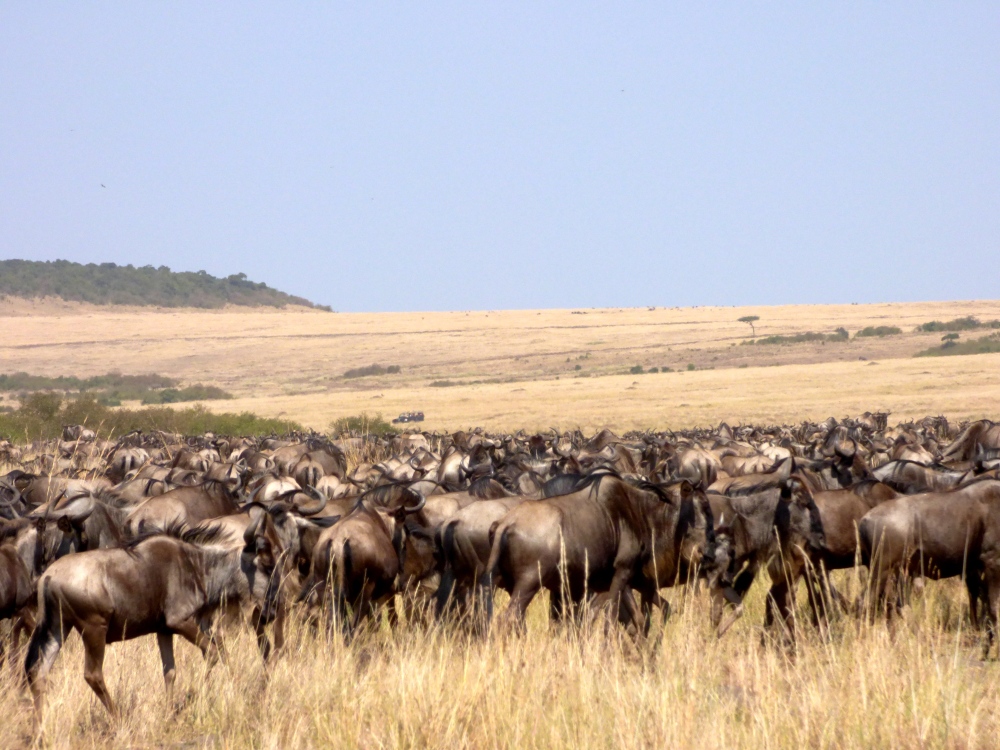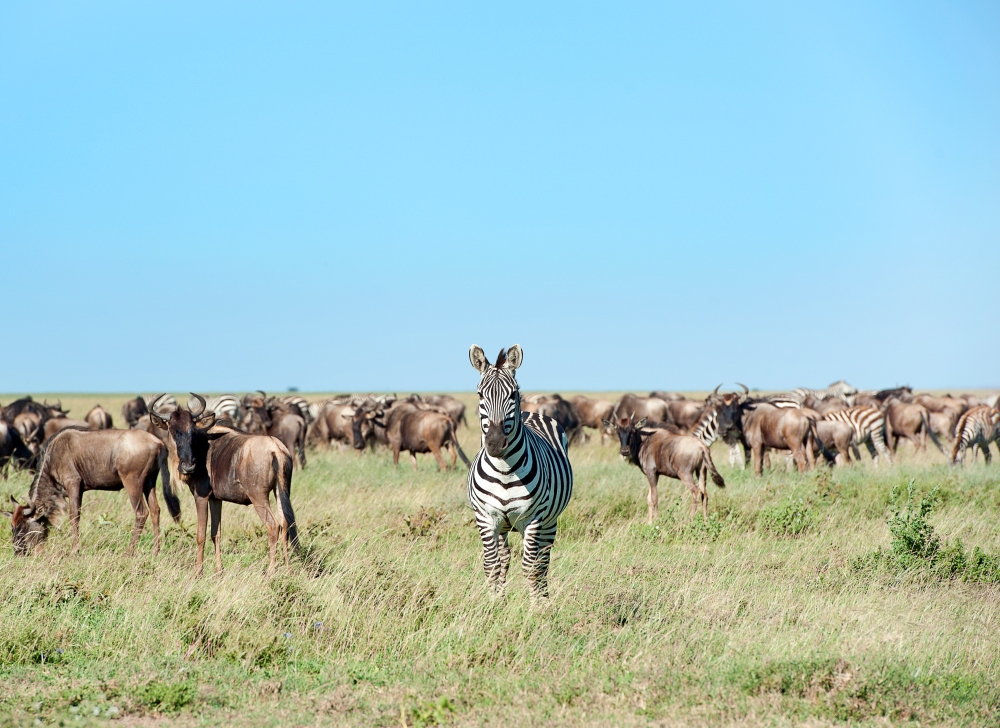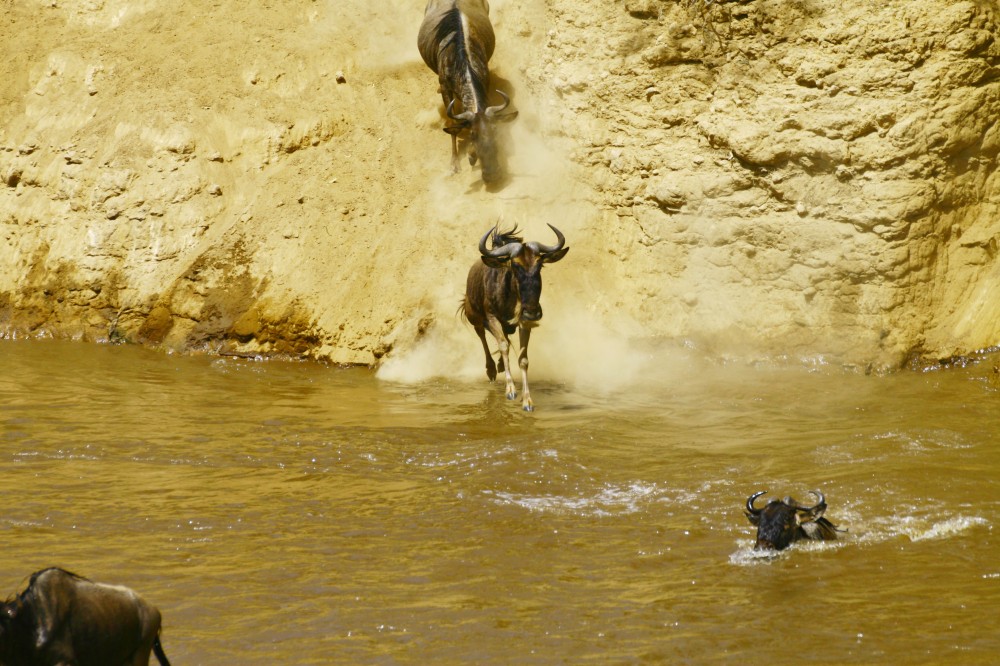The season is here. This being our first post in a very long while it is only fitting that we talk about the GREAT migration of the gnus. This is the time you get to witness one of the “Seven Wonders of the World” – Every year over a million wildebeest, zebra and antelope migrate clockwise around the Serengeti-Masaai Mara ecosystem. The movement is wondrous because; it takes place in two different countries- Kenya and Tanzania and it allows animals to court, mate and birth throughout the journey. It is an endless and extra-ordinary cycle.
That being said, there are several myths associated with the wildebeest migration. We have compiled some myths coupled with facts and information about the migration you can share with your loved ones during your trip.
1. The river crossings are the only interesting thing about the migration

This is one of the biggest myths about the migration. The river crossing is but a small part of the migration. Since it’s an endless cycle, there is more to see on this magnificent time like the rutting, mating, and calving, you get to see males fight for dominance and the right to mate (Romantic, isn’t it?); wobbly young calves taking their first steps; moms and babies bonding is also equally as exciting. As you can see the Migration can be viewed any time of the year, so choose the season and destination that best suits you.
2. The migration has a start and finish

The wildebeest ARE the migration – there is neither start nor finish to their endless search for food and water as the animals circle the Serengeti- Mara ecosystem in a relentless sequence of life and death.
January to March- The calving season takes place in the Serengeti and Ngorongoro Conservation area. As the food diminishes the herds are forced to move to the long grass plains and woodlands of the Serengeti’s western corridor near Lake Victoria.
April to July – The transitional period between the rains and the dry season and the wildebeests start moving north towards the Maasai Mara for greener pastures.
July to October – The grazing animals take a four-month-long trek towards the Mara River. In desperate need of green pasture, the countless herds need to cross the river to reach the lush, green grasslands in Maasai Mara.
November – The short rains call the migration back to the Serengeti.
3. Only the Wildebeest Migrate.

The large population of the migrating animals is made up of wildebeest. However, there are other animals including zebras and antelopes, Grant’s gazelle, Thomson’s gazelle, Eland and Impala. Since the migration happens in some of Africa’s largest and most beautiful parks, you will be guaranteed to view the Big Five as well.
4. It is all Beautiful

NOPE. The migration is also characterized by chaos and death. About 250,000 wildebeest die during this 1,800-mile journey due to predator attacks, exhaustion, and sickness. The animals are hunted down by the big carnivores and fall prey to crocodiles when crossing the river.
Basically, the migration is a beautiful spectacle to experience, and if you are a travel enthusiast or not, seeing the large herds of the wildebeests moving together is quite the experience.
Feel free to consult African Horizons (we have a special migration safari itinerary following the path of the migration or we can alternatively tailor make a safari for you to experience the migration)
